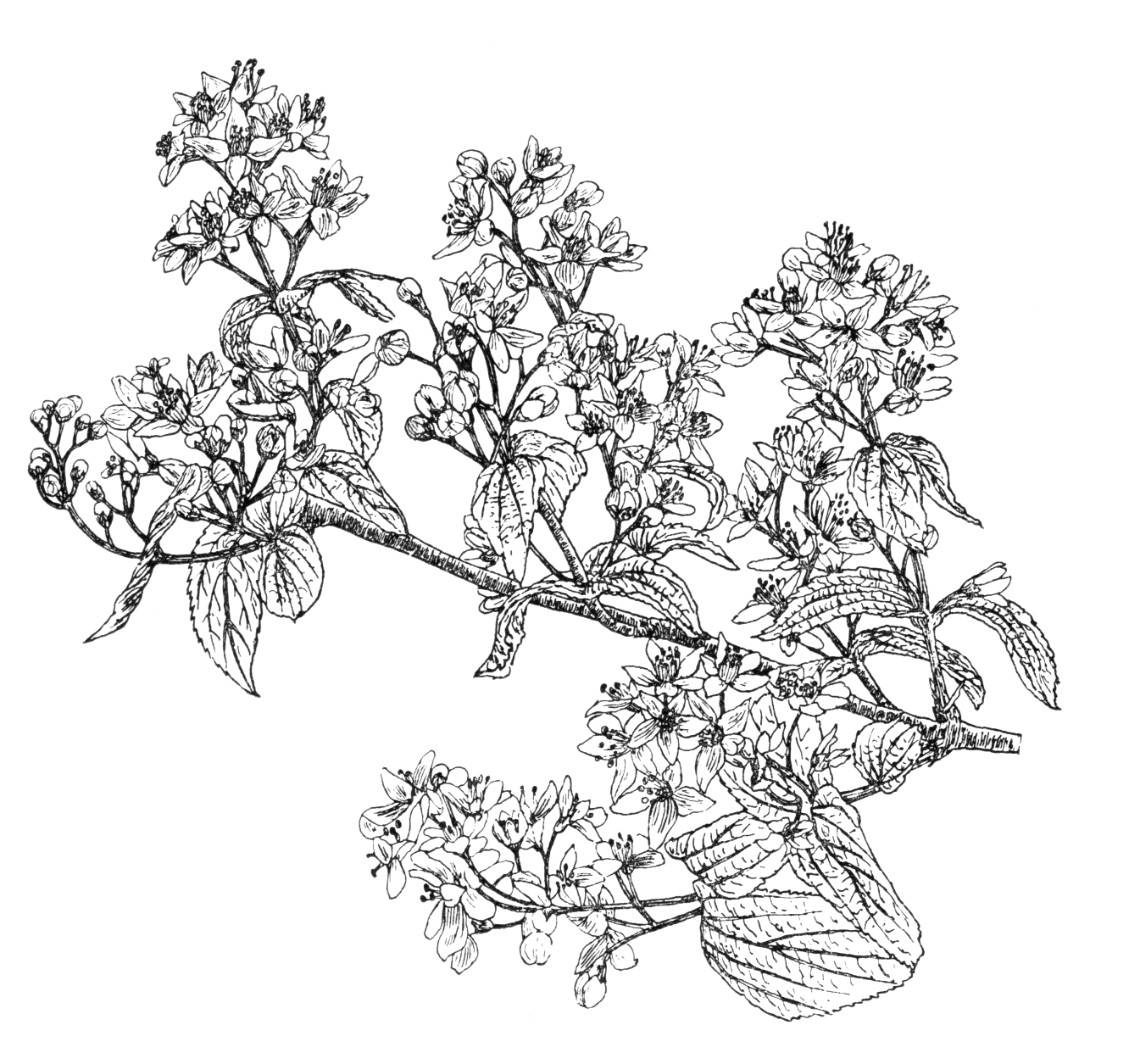Deutzia sieboldiana
Credits
Article from Bean's Trees and Shrubs Hardy in the British Isles
Recommended citation
'Deutzia sieboldiana' from the website Trees and Shrubs Online (treesandshrubsonline.
Genus
Synonyms
- D. scabra Sieb. & Zucc., not Thunb.
Other taxa in genus
- Deutzia amurensis
- Deutzia compacta
- Deutzia corymbosa
- Deutzia discolor
- Deutzia × elegantissima
- Deutzia glomeruliflora
- Deutzia gracilis
- Deutzia grandiflora
- Deutzia × hybrida
- Deutzia × lemoinei
- Deutzia longifolia
- Deutzia × magnifica
- Deutzia maximowicziana
- Deutzia mollis
- Deutzia monbeigii
- Deutzia pulchra
- Deutzia purpurascens
- Deutzia reflexa
- Deutzia rehderana
- Deutzia × rosea
- Deutzia rubens
- Deutzia scabra
- Deutzia schneiderana
- Deutzia setchuenensis
- Deutzia staminea
- Deutzia taiwanensis
- Deutzia vilmoriniae
- Deutzia wilsonii
A deciduous shrub of bushy, rather lax habit 4 to 6 ft high; young shoots covered with scurfy stellate down. Leaves ovate or oval, 11⁄2 to 3 in. long on the barren shoots, 5⁄8 to 11⁄4 in. wide, rounded, heart-shaped, or tapered at the base, pointed, sharply and irregularly toothed, dull green, stellately hairy on both surfaces, the hairs with three to five rays; veins prominent beneath; stalk 1⁄4 in. or less long. Leaves of the flowering twigs smaller and comparatively broader; often scarcely stalked. Flowers pure white, 1⁄2 in. in diameter, produced during early June in corymbose-paniculate clusters 1 to 21⁄2 in. long, terminating short lateral twigs which carry one or two pairs of leaves. Petals ovate; style rather longer than the stamens, whose wings (at least of the longer ones) taper towards the anthers; calyx felted, the lobes broadly triangular, persistent. Flower-stalks rough with bristles and stellate down.
Native of Japan; and an elegant though not showy shrub. It is of dwarfer habit than D. scabra, to which it is allied, and differs botanically in having the leaves on the flowering wood almost sessile; and in the longer, tapered anthers (see also D. scabra). The flowers are mignonette-scented and the stamens orange-coloured.

